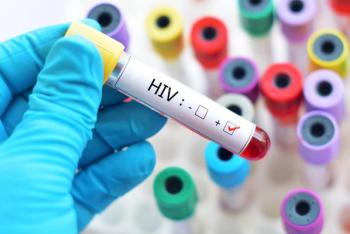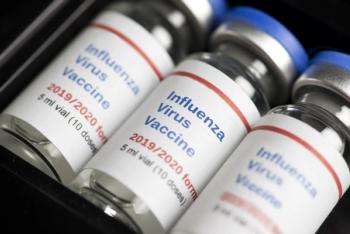
O’Mally Monahan, vice president of Operations at McKesson RxO, discusses patient assistant programs and how they can reduce a delay in treatment.

O’Mally Monahan, vice president of Operations at McKesson RxO, discusses patient assistant programs and how they can reduce a delay in treatment.

Pharmacists concluded that the workflow could be implemented for any drugs that are in short supply.

Jacinda Abdul-Mutakabbir, assistant professor of Pharmacy Practice at Loma Linda University, discusses how pharmacists can improve vaccination rates and learn from the pandemic.

Michelle Condren, PharmD, AE-C, BCPPS, CDCES, FPPA, discussed pharmacists' roles in inpatient diabetes management.

Results suggest pharmacists should use the phrase “bad reaction” to avoid stigma associated with the term “overdose.”

Three key opportunities for oncology stewardship are dose rounding, implementation of biosimilars, and management of sites of care.

Implementing screening tools, conducting brief interventions, and involving pharmacists can help manage alcohol use disorder and Alcohol Withdrawal Syndrome.

Scott Soefje, director of Pharmacy Cancer Care and assistant professor of Pharmacy at Mayo Clinic, discusses the role of PD-1 inhibitors in treating non–small cell lung cancer.

Pharmacy Times will be covering the American Society of Health-System Pharmacists 2022 Midyear Clinical Meeting from December 4 to 8.

In a live virtual symposium at the 2021 ASHP Midyear Clinical Meeting, 2 experts teamed up to highlight the place in therapy and management of oral oncolytics in follicular and marginal zone lymphoma.

Teena Chopra, MD, MPH, professor of infectious diseases at Wayne State University, discussed how microbiome-based therapeutics may impact the current treatment landscape for C. diff infection and recurrent C. diff infection.

Teena Chopra, MD, MPH, professor of infectious diseases at Wayne State University, discussed the current burden of C. diff infection and recurrent C. diff infection.

Teena Chopra, MD, MPH, professor of infectious diseases at Wayne State University, addressed the risk factors for C. diff infection and recurrent C. diff infection.

A panel recently re-convened recently to develop guidance for AmpC-bearing gram-negative pathogens.

The long-acting antiretroviral therapy is intended to replace antiretroviral regimens for individuals who are virologically suppressed.

In this video, Dr. Sherman recommends strategies for solving drug therapy related problems common to long-acting antiretroviral agents, such as missed doses, adverse drug reactions and drug–drug interactions.

Teena Chopra, MD, MPH, professor of infectious diseases at Wayne State University, addressed the relationship between gut microbiome and C. diff infection.

Teena Chopra, MD, MPH, professor of infectious diseases at Wayne State University, discusses the current treatment strategies for C. diff infection and recurrent C. diff infection, as well as the efficacy and safety of these treatments.

In an interview with Pharmacy Times, Thomas Lodise, PharmD, PhD, discussed new guidance released by the Infectious Diseases Society of America (IDSA) on the treatment of antimicrobial resistant gram-negative infections.

Teena Chopra, MD, MPH, professor of infectious diseases at Wayne State University, explains what the gut-brain axis is and how microbiome impacts this connection.

In this video, Dr. Sherman explains the recent data surrounding the right candidates for long-acting cabotegravir for HIV prevention.

Teena Chopra, MD, MPH, professor of infectious diseases at Wayne State University, discussed the role of the microbiome in overall patient health and recurrent Clostridioides difficile infection.

Lodise said that one of the notable takeaways is the de-prioritization of polymyxins for the treatment of these infections.

Results of analysis suggest that pharmacists can play a crucial role in increasing annual vaccinations.

In this video, Dr. Sherman describes the pharmacology and pharmacokinetics of cabotegravir and rilpivirine as long acting injectable antiretroviral therapy agents.

In this video, Dr. Sherman describes what pre-exposure prophylaxis is and how long-acting injectable antiretroviral agents can help to prevent HIV and may even improve adherence.

The investigators found that modeling was a cost-effective method for determining the functionality of the proposed blueprint by transforming it into a physical space.

Lodise discussed key points from the guidance, current regimen recommendations, and clinical scenarios where therapy recommendations outside of the guidelines might be considered.

Although barcode scanning during product verification has greatly improved the safety of medication dispensing operations, many products aren’t easily incorporated into traditional dose preparation processes, including medications manually dispensed in oral syringes.

The investigators found that the ability to track the status of a medication in real-time may assist with communication gaps between departments and facilitate patient safety improvements.